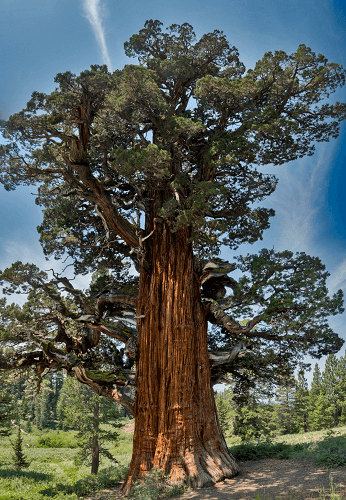The Trees Summary Class 10 English"The Trees" is a perfect example of symbolic poetry by Adrienne Rich, an American poet, essayist, and feminist. She is often regarded as the most widely-read and influential poet of the 20th century. Just like this poem, her most famous works have feminist elements. 
This poem can be analyzed from two different perspectives. The first one is symbolic analysis, where the poet talks in the context of feminism. The second perspective is that of nature conservation from human exploitation and degradation. We'll see the poem in both contexts. In the first context, we'll see how the trees get freedom and move toward the forest. Observing the context of feminism, the poet emphasizes women's desire and longing for freedom and expression in public. The trees are shown to desire to escape from houses and enter the world of wide-open wilderness, just like any woman suppressed by society. The poet can hear and sense their unexpressed emotions. According to her, women desire to move out to fulfill their objective of reviving the situation of society. Stanza 1:In the opening line, the poet says that "the trees inside" are ready to move toward the forest. Today there's been a rapid decline in trees and forest areas due to massive deforestation. We may have planted some trees and saplings in our home for decoration, but there's still a lack of trees in the forests outside, so the insects and birds cannot find shelter. So, now these plants in our houses have taken it upon themselves to move out and go to the forests that "were empty" and fulfill the lack of trees there. On seeing from the perspective of feminism, we see that symbolism has been used here because trees can't move. The trees here symbolize women trapped in their houses due to the old patriarchal society. According to her, the forest has been deserted for several days. Therefore, no birds, insects, or shadows can be found due to the forest's lack of trees. She means it feels incomplete without women in the outside world, just like a forest without trees. She relates this forest with "The human race's forest," which, just like the former, has been dark and empty for many days, but since the women have decided to step out of their homes, it will soon be filled with light. Stanza 2:In this stanza, the poet describes the efforts put in by the trees to free themselves. The poet describes how the plants battle to get to the forest. She states that, during the night, the trees ripped their roots away from the veranda floor. The leaves made a valiant effort to escape through the glass pane. The bigger and old branches attempted to escape from the rooftop during this struggle. Even the tiny and tender stems of the trees put a lot of energy into liberating themselves. Various-sized stems and branches here represent women from all age groups, and it can be well understood that their efforts depict the efforts made by women who want to be free and break the stereotype of being confined to their homes. One can conclude that women are in dire need of a change, and their efforts are similar to that of a patient who has been discharged from a hospital and wants to flee the place immediately despite being in a half-conscious state. 
Stanza 3:In the third stanza, the poet describes herself sitting on the veranda and "writing long letters." She says that in these letters, there has been no mention of the trees or their departure from the house. She adds that it is a clear night, and the bright-shining moon can be seen above in the night sky. In contrast to the general trend, the night here is beautiful because the trees are about to move out and thus improve the environment's present condition. She has seen women step out and contribute to improving the world, just like she can see the trees through her open door while sitting on her veranda. The clear night and bright moon symbolize warmth and welcomeness offered to women by the outside world. She says there is a light aroma of lichens and small leaves in the air, which, to the poet, feels like the crying voice of trees calling out for their freedom from the house's walls. In women's context, the aroma here is the sense of motivation and enthusiasm which arises in other women when they see their counterparts going out and doing well. Stanza 4:In this stanza, the poet speaks about thoughts emerging in her mind. According to her, the whispers and thoughts emerging in her mind would stop tomorrow as the trees would be gone by then. She says she could hear "slow whispers" from the escaping trees. The whispers mentioned here are noises made by the escaping trees. According to her, no sooner the trees leave the house, they're greeted and welcomed by the "rushing wind." It's a clear night, and when the poet looks at the oak tree in the forest, she sees a crown on top of it. The crown she's talking about is formed by the branches' shadows on the moon. The crown on the oak tree shows us nature's way of welcoming the trees back into the forest. The "whispers" also represent the objections laid on women by the patriarchal society. Thus, she eventually means that the whispers she hears today will be gone very soon as the "glass" of societal pressure and objections breaks in the coming time. As a change awaits, the poet begs the reader to pay close attention. She then talks about wind meeting the trees. With the "rushing wind," she refers to the changed modern world, which promotes and welcomes women in all aspects. The -last two lines of this poem say that everything is welcoming for women in this new and changed world. Even the moon with the oak trees' shadow makes a crown for women and praises their efforts.
Next TopicSeventeen Oranges Lesson Summary
|
 For Videos Join Our Youtube Channel: Join Now
For Videos Join Our Youtube Channel: Join Now
Feedback
- Send your Feedback to [email protected]
Help Others, Please Share









